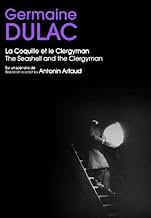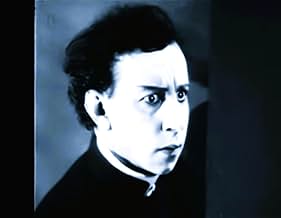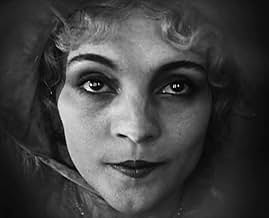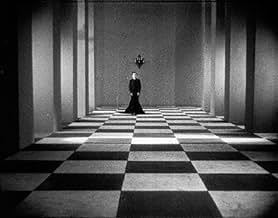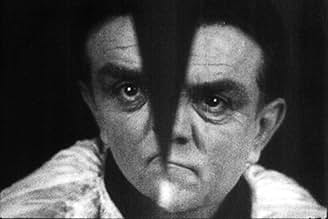La coquille et le clergyman
- 1928
- 40m
IMDb RATING
7.0/10
2.4K
YOUR RATING
Obsessed with a general's woman, a clergyman has strange visions of death and lust, struggling against his own eroticism.Obsessed with a general's woman, a clergyman has strange visions of death and lust, struggling against his own eroticism.Obsessed with a general's woman, a clergyman has strange visions of death and lust, struggling against his own eroticism.
- Director
- Writers
- Stars
- Director
- Writers
- All cast & crew
- Production, box office & more at IMDbPro
Featured reviews
If you are looking for a twin movie to go alongside Luis Buñuel's surrealist head-scratcher Un Chien Andalou, then look no further than this film. The Seashell and the Clergyman shares that famous movie's bizarre, often indecipherable, imagery as well as anti-clerical subversion and frank sexuality. I can't say I understood what was going on. I'm not sure if I was even supposed to. But like Buñuel's film this movie is all about surrealism, it doesn't always have logical meaning. An image such as the clergyman crawling through the streets of Paris is something that is not easily forgotten and the film in general operates in the same way as a dream. The best way to appreciate a film such as this is to sit back and take in the imaginative visuals and dream-like ambiance that is specific to these ancient silent movies. If you are at all interested in 20's surrealist cinema then this is a film I would definitely recommend. Also, the fact that a woman made such a provocative film all those years ago is especially surprising seeing as female artists have always struggled with having their voice heard.
Surrealism as an art form, emerging in Europe after World War One, was designed to be illogical, but appealing to the subconscious. In cinema, there's debate as to what was the first surrealistic film in history. But there's no doubt filmmaker Germaine Dulac's February 1928 "The Seashell and the Clergyman" could qualify as one of the first containing elements of surrealism in it.
The 40-minute film, about a member of the clergy who lusts after the wife of a general and attempts to suppress such thoughts, is a whirlwind of images disconnected from any plot. Members of the British Board of Film Censors were totally confused by the piece. They wrote Dulac's production was "so cryptic as to be almost meaningless. If there is a meaning, it is doubtless objectionable." The board banned the film in the United Kingdom. Even the book's author "The Seashell and the Clergyman" was based on, Antonin Artaud, a top avant-garde writer, frowned upon Dulac's version.
History, however, has proven more kind to "The Seashell and the Clergyman." Once other surrealistic films were released, most notably 1929's "Un Chien Andalou," whose makers claim was the first in that category, it was apparent that elements found in those films sprung from the images of Dulac's. The French feminist filmmaker, who earlier produced the highly-regarded 1922 "The Smiling Madam Beudet," now is recognized by film historians as the pioneer of surrealism. Her stated goal was to create a new "art of vision," one that through symbolic images reveal a series of metaphors. It was meant to stir the viewer's psyche. Dulac's objective in "The Seashell" was to create an entirely new visual language on the screen, addressing her audience members' unconsciousness. In that, many film critics agree, she succeeded.
The 40-minute film, about a member of the clergy who lusts after the wife of a general and attempts to suppress such thoughts, is a whirlwind of images disconnected from any plot. Members of the British Board of Film Censors were totally confused by the piece. They wrote Dulac's production was "so cryptic as to be almost meaningless. If there is a meaning, it is doubtless objectionable." The board banned the film in the United Kingdom. Even the book's author "The Seashell and the Clergyman" was based on, Antonin Artaud, a top avant-garde writer, frowned upon Dulac's version.
History, however, has proven more kind to "The Seashell and the Clergyman." Once other surrealistic films were released, most notably 1929's "Un Chien Andalou," whose makers claim was the first in that category, it was apparent that elements found in those films sprung from the images of Dulac's. The French feminist filmmaker, who earlier produced the highly-regarded 1922 "The Smiling Madam Beudet," now is recognized by film historians as the pioneer of surrealism. Her stated goal was to create a new "art of vision," one that through symbolic images reveal a series of metaphors. It was meant to stir the viewer's psyche. Dulac's objective in "The Seashell" was to create an entirely new visual language on the screen, addressing her audience members' unconsciousness. In that, many film critics agree, she succeeded.
The predecessor of Un Chien Andalou and directed by the lone woman filmmaker of her time, La Coquille et le Clergyman is one of the most celebrated of French avant-garde movies of the '20s, partly because Antonin Artaud wrote the script, partly because the British censor of the time banned it with the legendary words 'If this film has a meaning, it is doubtless objectionable'. Artaud was reputedly unhappy with Dulac's realization of his scenario, and it's true that the story's anti-clericalism (a priest develops a lustful passion that plunges him into bizarre fantasies) is somewhat undermined by the director's determined visual lyricism. But the fragmentation of the narrative and the innovative imagery remain provocative, and the film is of course fascinating testimony to the currents of its time.
Obsessed with a general's woman (Genica Athanasiou), a clergyman (Alex Allin) has strange visions of death and lust, struggling against his own eroticism.
"Un chien andalou" is considered the first surrealist film, but its foundations in "The Seashell and the Clergyman" have been all but overlooked. However, the iconic techniques associated with surrealist cinema are all borrowed from this early film. Conversely, Alan Williams has suggested the film is better thought of as a work of or influenced by German expressionism.
I think this is why I absolutely adore this film. I'm enamored with German expressionism, and I love surreal film. This is the two combined, and the acting is superb. Anyone who loves "Un chien" really needs to check this one out.
"Un chien andalou" is considered the first surrealist film, but its foundations in "The Seashell and the Clergyman" have been all but overlooked. However, the iconic techniques associated with surrealist cinema are all borrowed from this early film. Conversely, Alan Williams has suggested the film is better thought of as a work of or influenced by German expressionism.
I think this is why I absolutely adore this film. I'm enamored with German expressionism, and I love surreal film. This is the two combined, and the acting is superb. Anyone who loves "Un chien" really needs to check this one out.
Stumbled upon this on Wikipedia:
quote: The British Board of Film Censors famously reported that the film was "so cryptic as to be almost meaningless. If there is a meaning, it is doubtless objectionable"
I wonder if the fact that this was the work of a female director influenced people of that time to dismiss the importance of this particular piece.
Just with a little research we can find Dulac's political views about gender, thus for me is quite clear the intention behind this film, and perhaps we can have second guesses about the symbols used in it, but her questioning the church, the state and male sexuality and the positioning of women at that time was groundbreaking. Which is sad, because if not but that huge dismissal, this could be catalogued easily as the very first surrealist film of all times, BEFORE Buñuel-Dalí's 'A Chien Andalou' and don't get me wrong I enjoyed it, but even Buñuel stated that he didn't put any meaning behind it, it was just a dream put into film so why the double standard?
Loved the ideas behind The Seashell and the Clergyman, it was great to bump into this film, for it was an amusing discovery!
quote: The British Board of Film Censors famously reported that the film was "so cryptic as to be almost meaningless. If there is a meaning, it is doubtless objectionable"
I wonder if the fact that this was the work of a female director influenced people of that time to dismiss the importance of this particular piece.
Just with a little research we can find Dulac's political views about gender, thus for me is quite clear the intention behind this film, and perhaps we can have second guesses about the symbols used in it, but her questioning the church, the state and male sexuality and the positioning of women at that time was groundbreaking. Which is sad, because if not but that huge dismissal, this could be catalogued easily as the very first surrealist film of all times, BEFORE Buñuel-Dalí's 'A Chien Andalou' and don't get me wrong I enjoyed it, but even Buñuel stated that he didn't put any meaning behind it, it was just a dream put into film so why the double standard?
Loved the ideas behind The Seashell and the Clergyman, it was great to bump into this film, for it was an amusing discovery!
Did you know
- TriviaThe British Board of Film Censors banned this film in the UK in 1927, saying, "This film is so obscure as to have no apparent meaning. If there is a meaning, it is doubtless objectionable."
- ConnectionsEdited into Women Who Made the Movies (1992)
Details
- Release date
- Country of origin
- Official site
- Language
- Also known as
- The Seashell and the Clergyman
- Filming locations
- Production company
- See more company credits at IMDbPro
- Runtime40 minutes
- Color
- Sound mix
- Aspect ratio
- 1.33 : 1
Contribute to this page
Suggest an edit or add missing content

Top Gap
By what name was La coquille et le clergyman (1928) officially released in Canada in English?
Answer
